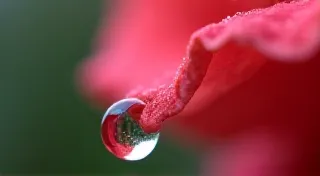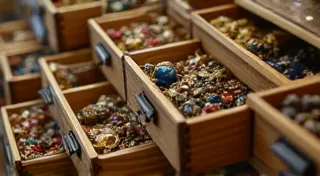The Paper Garden: Pressed Flowers and the Romanticism of Vintage Bookmarks
There's a quiet intimacy that comes with holding a vintage bookmark. It's more than just a piece of cardstock or fabric marking a page; it's a whispered secret from a bygone era. For those of us drawn to the delicate beauty of pressed flowers incorporated into these small treasures, that intimacy deepens tenfold. These aren’t just bookmarks; they are miniature paper gardens, poignant echoes of Victorian sentimentality and a tangible link to a world steeped in romantic ideals.
My own fascination began quite unexpectedly. I was researching antique stationery for a different project – a study of letter writing – when I stumbled upon a small collection of bookmarks tucked away in an old dealer's box. Each one held a carefully preserved blossom, a fragment of a forgotten memory. The fragility of the paper, the vibrancy (or charmingly faded hues) of the flowers – it felt like holding a piece of poetry itself.
A History Etched in Petals
The Victorian era (roughly 1837-1901) was a period defined by an intense appreciation for nature, sentimentality, and elaborate ornamentation. Queen Victoria's own profound grief following the death of her husband, Prince Albert, further solidified these themes. Mourning rituals became highly stylized, and natural imagery – particularly flowers – were employed as symbols of remembrance, love, and loss. Flowers were assigned specific meanings (floriography), becoming a subtle and nuanced language of emotions. The simple act of placing a bookmark, once merely functional, became laden with meaning, reflecting this heightened sense of personal expression and the importance of the written word. You might be interested in learning about the evolution of the bookmark itself and how its form and function shifted over time.
Pressing flowers was a widespread hobby during this time, a pastime enjoyed by women of all social classes. It was a practical activity – preserving beauty – but also a creative outlet, a way to express emotions and decorate correspondence and small gifts. The increasing affordability of paper and the rise of mass production meant that bookmarks themselves became increasingly common and accessible. Combining these two trends – flower pressing and bookmark production – resulted in the exquisite creations we now consider vintage treasures. The Victorian era’s dedication to elaborate detail extended beyond flower pressing and into the very methods by which books were bound and presented, impacting how readers interacted with literature and, consequently, the role of the bookmark.
Imagine a young woman, perhaps in a sun-drenched parlor, painstakingly selecting a bloom – a pansy for remembrance, a forget-me-not for everlasting love, a sprig of lavender for devotion. She's meticulously pressing it between sheets of paper, carefully layering it to ensure a perfect, flat impression. This wasn’t merely a craft; it was a form of meditation, a connection to the natural world, and a way to impart a personal touch to a simple gesture. This careful selection and arrangement of elements speaks to a deeper cultural significance of small, everyday objects, reflecting how even a simple bookmark could tell a story. The choices she made weren’t arbitrary; they were informed by a complex system of symbolic language that dictated the meaning behind every flower.
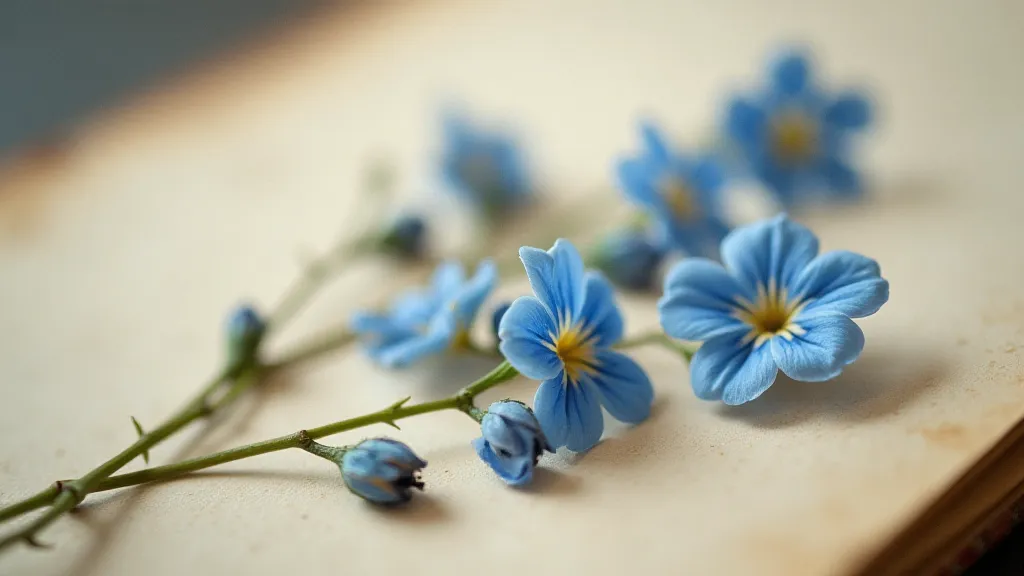
Craftsmanship and Delicate Details
The artistry involved in creating these bookmarks is often overlooked. While some were mass-produced, the most desirable examples display signs of handcrafted care. Look for details like hand-painted backgrounds, intricate paper lacework, or carefully chosen ribbon ties. The quality of the paper itself is also a key indicator. Linen or laid paper – recognizable by the faint lines running across its surface – was often used for higher-end bookmarks, signifying a greater attention to detail. The level of craftsmanship visible in these bookmarks parallels the broader dedication to quality found in Victorian-era bookbinding and the creation of luxurious reading materials.
The selection of flowers also speaks volumes. Roses, violets, lilies of the valley, and ferns were popular choices, each carrying its own symbolic weight. Less common flowers, or unusual combinations, can indicate a more personalized and thoughtful creation. The preservation method itself varied. Some flowers were simply pressed and dried, while others were treated with glycerin to retain some of their pliability and color. Understanding the nuances of floriography – the Victorian language of flowers – can dramatically enhance the appreciation for the artistry and intentionality behind each bookmark. A seemingly simple arrangement could convey a complex message, a subtle expression of affection or remembrance.
Damage, naturally, is a factor in assessing value. Tears, fading, and staining are common, but often contribute to the bookmark's charm and tell a story of its journey through time. A small chip on a corner, a slight discoloration – these aren’t necessarily flaws; they are marks of history. Consider, too, that these small imperfections can offer a glimpse into the lives of those who cherished them – fleeting moments captured in paper and petal. The wear and tear these bookmarks have endured speaks to their lasting legacy and the countless readers who have turned pages marked by these delicate treasures.
Collecting and Care Considerations
Building a collection of vintage pressed flower bookmarks can be a deeply rewarding experience. Start by familiarizing yourself with the common flowers and their symbolic meanings. Attend antique fairs, browse online auction sites, and cultivate relationships with reputable dealers. Don't be afraid to ask questions – the more you know about a bookmark's provenance, the more you’re likely to appreciate its value and significance. The value isn't solely tied to rarity or condition; it’s also deeply connected to the historical and cultural context of the piece, reflecting the passions and artistic sensibilities of a bygone era.
When acquiring these delicate treasures, handle them with extreme care. Avoid direct sunlight, which can cause fading. Store them flat in acid-free sleeves or boxes. Gentle brushing with a soft brush can remove surface dust. Refrain from using harsh chemicals or cleaning solutions, as these can damage the paper and the pressed flowers. The stories embedded within these objects are invaluable, and their preservation is a responsibility we share as collectors and appreciators of history. The proper handling and storage of these bookmarks are essential to ensuring their survival for generations to come, a testament to our respect for the artistry and history they represent.
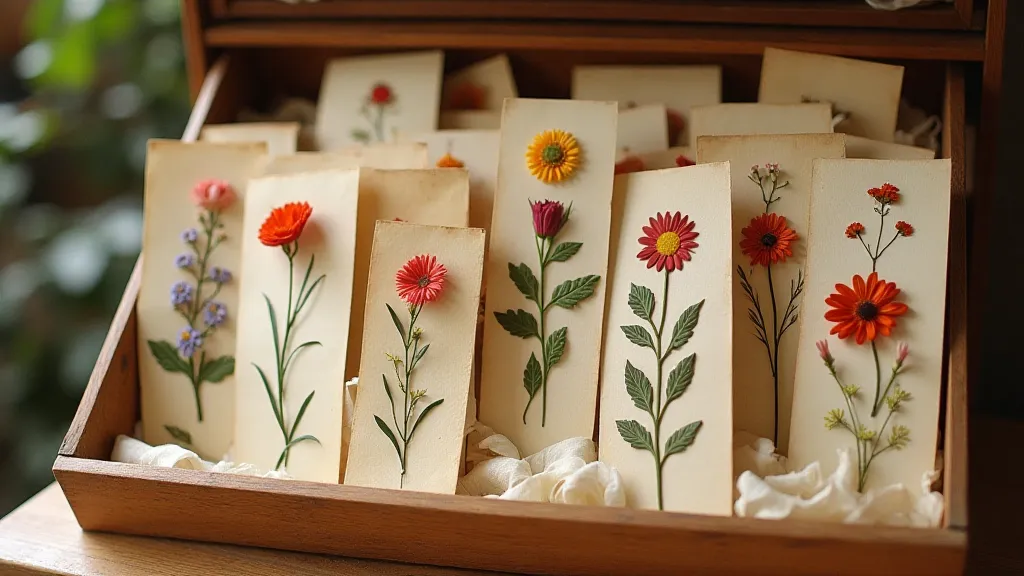
Beyond the Sentiment: The Enduring Appeal
The enduring appeal of vintage pressed flower bookmarks lies not just in their aesthetic beauty but also in their ability to transport us to another time. They are tangible links to a world of romantic ideals, intricate craftsmanship, and heartfelt sentiment. Holding one in your hand is like receiving a whispered message from the past—a reminder of the enduring power of nature, love, and human connection. Victorian literature often celebrated the ephemeral beauty of nature, and these bookmarks serve as a poignant reminder of that artistic sensibility. If you’re drawn to the broader themes of Victorian aesthetics, delving into the history of literary movements and artistic trends of that period can offer a richer understanding of the cultural context surrounding these cherished objects.
These bookmarks aren’t simply objects to be displayed; they are invitations to slow down, to appreciate the beauty of the small things, and to reflect on the enduring legacy of a bygone era. They are quiet testaments to the human need to create, to remember, and to express the deepest emotions through the simplest of mediums. They provide a fascinating window into a time when the written word held even greater significance, and small gestures carried immense weight. The careful artistry behind each bookmark speaks to a broader cultural reverence for the written word and the act of reading.
To truly understand the cultural context of these treasures, it's useful to explore the broader significance of literature and reading during the Victorian period. From folios to favorites, the bookmark's purpose evolved alongside the evolving literary landscape.
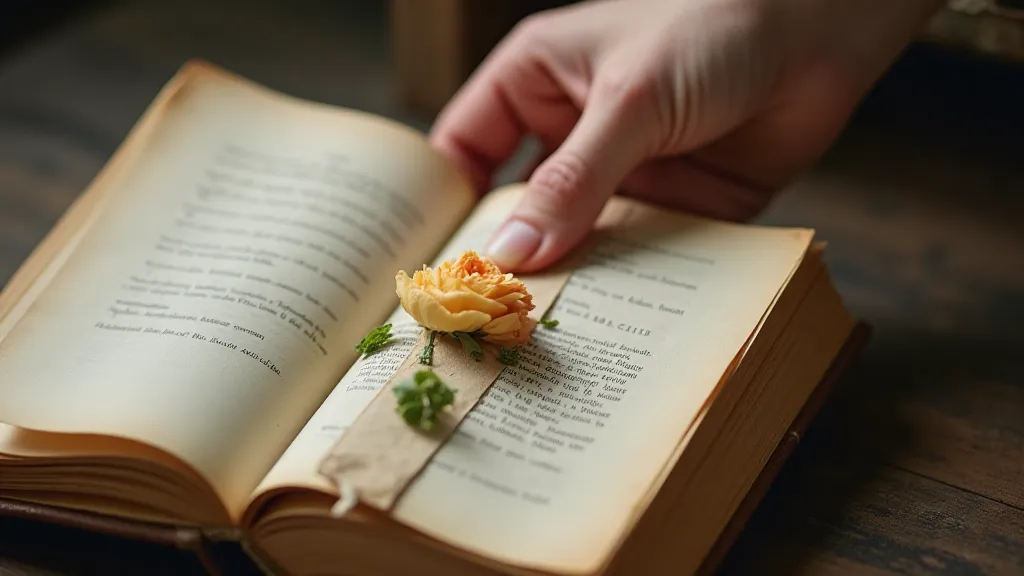
More than just marking a page in a book, they mark a moment in time—a moment captured in paper and petal, a moment preserved for us to discover and cherish. They often hold within them a narrative—a personal history interwoven with larger societal trends, illustrating how seemingly insignificant objects can become powerful symbols of an era. The stories they tell aren’t just about individual lives; they reflect a collective memory of a time when handwritten letters and carefully chosen gifts were cherished expressions of affection and connection.
Imagine the young woman who created the bookmark, now an elderly woman recounting her youth. She might describe the joy of choosing a particularly vibrant bloom, the satisfaction of pressing it flat, and the pleasure of gifting it to a dear friend or loved one. These bookmarks are not just artifacts; they are portals to personal narratives and cultural memories.
The Victorian fascination with storytelling extended beyond written narratives, influencing everything from decorative arts to social customs. If you’re interested in exploring the broader context of Victorian culture, delving into the history of Victorian literature and its impact on society can provide valuable insights.
